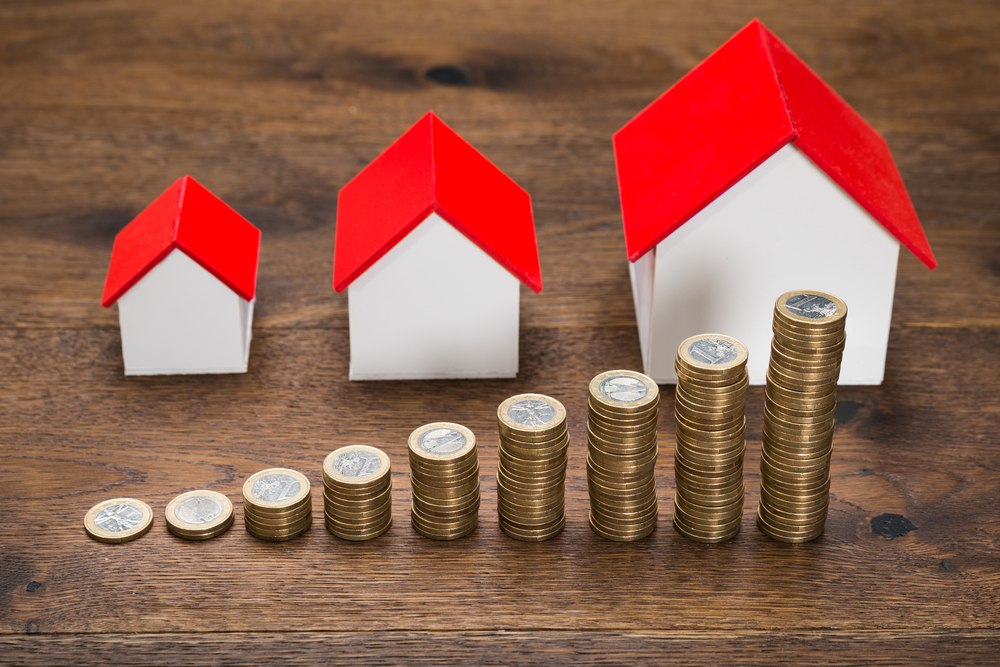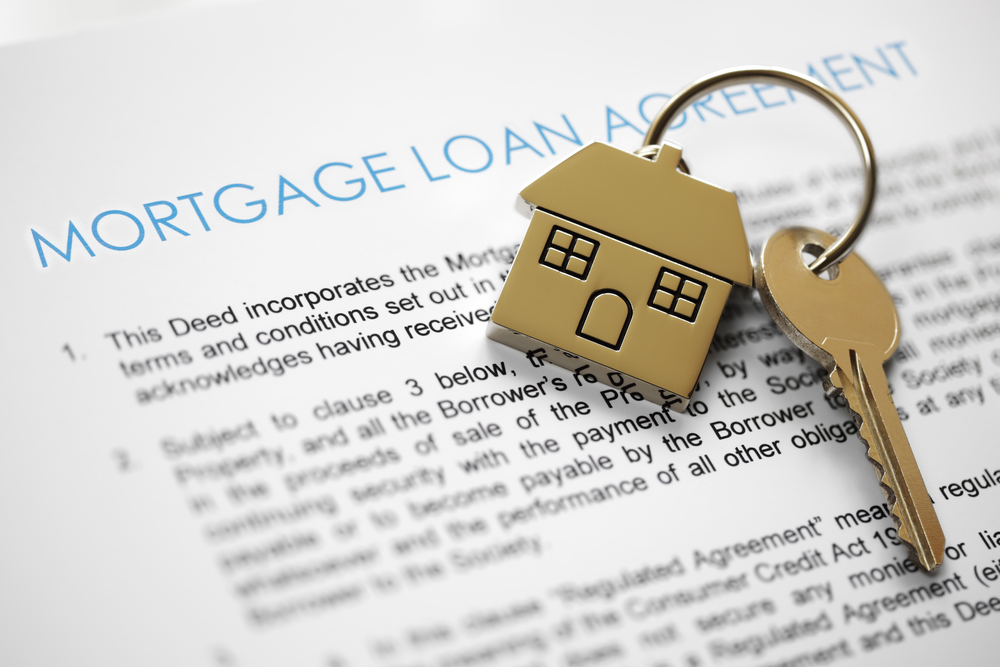The ultimate guide to home loans in Australia

If you’re like most Aussies, buying a house is an exciting stage of your life. Soon, you’re going to have a place to call your own — and that’s something to celebrate.
At the same time, it’s probably one of the most stressful processes you’ll go through. That’s because, unless you’re a seasoned property expert, chances are you’re diving into a completely unknown world of property negotiations, home loans and mortgage repayments.
Your property is going to be one of the biggest purchases, if not the biggest purchase, that you make in your life. And when it comes to getting a home loan, having the right advice and help can literally save thousands, or even tens of thousands of dollars.
While navigating the world of home loans feels daunting and unnecessarily complicated, it’s actually pretty straightforward once you know the basics. That’s why we’ve put together this guide, which covers everything you need to know about home loans in Australia.
From understanding the different types of home loans out there to a step-by-step breakdown of the loan application process, we’ll give you all the information you need to make the right call for your home loan.
What is a home loan?
Home loans are a loan given to you by a bank or lender, in order to help you purchase a property.
To secure a loan, you’ll need to have a deposit of at least 5%, although the average Aussie generally has a 20% deposit. Your lender then lends you the rest of the money to buy the house, which can be anywhere up to 95% of the purchase price. On top of that, there are some extra costs to take into account, such as stamp duty, conveyancing and legal fees.
Once you take out a home loan, you’ll have to make regular repayments weekly, fortnightly or monthly, across the length of the loan term. In Australia, loan terms generally range between 25-30 years, depending on how much you borrow and how quickly you can make repayments.
The different costs that make up your home loan
A home loan is about more than simply borrowing money to pay off your home. There are a few different costs to factor in — all of which affect how much you’ll be paying off over the course of your loan.
The principal
This is the amount that you’ve borrowed to purchase your home and have to pay back to the lender. The principal amount reduces over time as you pay off your loan.
For example, if you have a 20% deposit on a home that costs $1 million, the initial principal amount would be $800,000. If you’ve already paid off $100,000 on that loan, the remaining principal amount would be $700,000.
Home loan interest rate
Interest rates are the cost a lender charges you on your principal which is calculated as a percentage of the l amount that you borrowed from the lender.
While the home loan rate of interest might seem like a small percentage, this amount adds up over time because interest is calculated on a daily basis.
The average Australian ends up paying almost the cost of the home in interest alone, which is why it’s essential to find the right home loan product available and review it every 2 years.
Lender fees and charges
On top of the principal and interest, there are other fees and charges associated with taking out a home loan. These vary depending on your lender.
Some of the most common lender’s fees and charges may include
- Monthly Account-keeping fees,
- Annual Package Fee
- Home loan application or processing fee,
- Redraw fees or;
- Break cost fee (if your home loan is fixed) applies if you decide to exit the fixed term before it expires.
- Lenders Mortgage Insurance (if you are borrowing more than 80% of the property value)
What are the extra fees and charges associated with buying a property?
On top of the purchase price and lender’s fees, there are other fees that you may need to consider when purchasing a property, which a lot of first home buyers may not know of.
These include:
- Stamp Duty (only if you are not eligible for the stamp duty exemption)
- Government Registration Fees
- Legal / Conveyancing Fees
- Miscellaneous cost – you may need to pay rates (e.g. council, water etc.) on a pro-rata basis
Types of home loans in Australia

Like credit cards or other types of loans, lenders offer different types of home loans to suit your personal needs and circumstances. Regardless of the type of loan, the principal doesn’t change. The main difference comes down to the interest rate.
While there are lots of different options out there, the most common ones you’ll probably come across are fixed-rate home loans, variable home loans and split home loans.
Fixed-rate home loans
- What is a fixed-rate loan? Fixed-rate home loans are where your loan interest rate is fixed for a specific period of time. For example, you might take out a fixed-rate home loan with an interest rate of 2.86% per annum over five years. This means that, regardless of how interest rates change over the next five years, you’ll be paying the same interest rate.
- What are the benefits of having a fixed-rate loan? The benefit of fixed-rate home loans is that it provides you with more certainty and predictability on repayments. Regardless of how rates fluctuate or dip, you’ll still be paying the same amount on your home loan over a fixed period — making it way easier to budget.
- What are the drawbacks of having a fixed-rate loan? Fixed-rate loans are notoriously inflexible. Even if the official RBA interest rates dip, you’ll still have to pay the same amount of interest for the duration of your loan. Plus, you typically can’t make extra payments or sell your property before the term is up otherwise you may have to pay a break-cost fee to get out of it.
Variable home loans
- What is a variable home loan? The other popular type of home loan is a variable home loan. Put simply, the interest rate you pay on your home loan will change as the interest rate market changes. If the official cash rate announced by the Reserve Bank (RBA) rises, lenders will more than likely increase your interest rate along with it. On the flipside, if it falls, the lender will decrease your interest rate as well. How much your lender will pass on the rate cut or rate increase will ultimately depend on the lender themselves.
- What’s the main difference between variable and fixed-rate loans? As you’d probably guess, variable home loans offer much more flexibility than fixed-rate loans. This is a good and bad thing: you can make extra repayments if you want, but it’s more difficult to plan and budget how much interest you’ll be paying over time.
Split home loans
- What is a split home loan? Split home loans are a combination of fixed-rate and variable loans, where part of your home loan is on a fixed-rate and part of it is on a variable rate.
- Why should I get a split home loan? These loans are a good option if you want part of your home loan repayment to be certain and still have part of your loan flexible to move with the market.
There are also other options out there, such as interest-only home loans and line of credit home loans. However, if you’re a first home buyer, these are probably the three options you’ll be tossing up between.
How to get a home loan
Prefer to watch a video? Learn how Rateseeker helps you secure the sharpest home loan rate in this explainer video.
1. Save for a deposit
First things first: before getting a home loan, you need to have a deposit, which is a percentage of the total purchase price you are looking at offering. For most Aussies, the general rule of thumb is to save a deposit of around 20%, if you want to avoid paying lenders mortgage insurance.
While you can technically get approved for a home loan with as little as 5%, lenders might view you as riskier and may have additional restrictions making your application harder to be approved such as demonstrating that you have genuine savings —despite paying Lenders Mortgage Insurance (LMI). This is because the mortgage insurer (Genworth or QBE) will also have to approve your home loan application.
2. Research different home loan rates
As we mentioned earlier, even a seemingly insignificant amount on your home loan interest rate can add up over time.
Example: Let’s say you have a mortgage of $300,000 over a 25-year loan term. Here’s a look at how your repayments would add up over time:
| Interest rate | 3.69% p.a. | 3.40% p.a. |
| Monthly repayments | $1,533/month | $1,486/month |
| Total interest paid over the course of your mortgage | $159,785 | $145,749 |
| Amount saved: | $14,036 |
That’s why it’s essential to do your research and compare all the different home loan rates.
Pro tip: While it’s easy to head over to your nearest bank, keep in mind that they don’t always have the sharpest interest rates out there. The easiest way to research all the different home loan rates is to use a home loan rate comparison platform like Rateseeker. This way, you can compare different rates from over 30+ lenders and find the one that offers you the best deal on your loan.
3. Secure pre-approval
Once you have an idea of the home loan you’re after, the next step is to get pre-approved for your loan. This part isn’t compulsory and not all lenders offer it. However, if you can get pre-approval, it gets you “buying ready” and gives you the confidence to make an offer on a property.
What is pre-approval?
Pre-approval gives you a rough idea of how much you can borrow, based on your deposit, credit history and some financial information. It also strengthens your bargaining power when you’re making an offer on a home. If the seller knows that you’re pre-approved, you’ll be seen as a preferred buyer — which comes in handy if there’s stiff competition for a property.
How do I secure pre-approval?
A lot of lenders (like the major banks) allow you to complete the pre-approval process online. The whole process can be done in a matter of hours or even a few days. However, bear in mind that you might still need to visit a branch for an in-person consultation.
4. Make an offer and get full approval
Now that you are ‘buying ready’ and found your investment or ‘forever home’, you’ll need to get unconditional approval from your lender to move forward.
After you’ve made an offer, your lender will require you to provide a contract of sale. They’ll then conduct a valuation of the property and, if approved, draw up the loan documents. If this is all good to go, you’ll receive your loan documents and contract. These should be reviewed by your solicitor or conveyancer, then signed by both you and the seller.
6. Arranging settlement
Here’s the final part of the home loan process: settlement. This is where the seller officially transfers the property to you, and you pick up the keys to your new home. It’s also when your loan kicks into effect, and you’re required to finalise and pay for all the associated costs that comes with buying a home (such as stamp duty).
Making repayments

After your property is settled, you’ll need to start making repayments on your loan.
The amount you’ll pay will depend on a few things, including:
- The principal amount you borrowed
- The interest rate on your loan
- Your repayment type (principal and interest vs. interest only)
- Your repayment frequency (weekly, fortnightly or monthly)
- Your loan term
Most lenders and your mortgage broker will cover this information when you take out your loan, but you can also figure it out yourself using a home loan repayment calculator.
Handy tips to keep in mind when making repayments
- Your lender should provide you with multiple options to make your repayments, including electronic transfer, direct debit, phone or internet banking, and even BPAY.
- Depending on your type of loan, you can also make extra repayments to pay your loan off faster and save some money on interest.
- When it comes to paying off your mortgage, it’s essential to keep up with your repayments. Missing a payment, or several payments, could result in a penalty and negatively affect your credit score. This can impact your ability to refinance or apply for a home loan in the future.
- Set scheduled reminders or automatic payments (direct debit) to ensure you don’t forget to pay off your loan.
- If you’re struggling to make repayments, speak to your lender directly and see if they can offer any solutions to help you out.
Useful home loan resources
- Property buying cost calculator. This great tool helps you figure out exactly how much you need to save to purchase a property. It factors in different factors including lender fees, insurance costs, stamp duty, the cost of connecting utilities, and more.
- Home loan calculator. Use this calculator to see how much you can borrow based on your expenses, income and living situation.
- Loan comparison calculator. Got two options and not sure which is better? Use this calculator to compare two different loans side-by-side, to figure out the right one for you.
- Frequently asked questions. If you’re buying a home or refinancing, you probably have a lot of questions. This comprehensive FAQ covers answers to some of the most commonly asked questions by homeowners and first home buyers.
Find the best home loan rate for you
Getting a home loan doesn’t have to be complicated and time-consuming. You just need to have the right information and the right team on your side to land the best deal out there.
If you’re preparing to purchase property in Australia, Rateseeker is here to help you buy your dream home with all-time low rates. Simply tell us what you need help with, then we’ll help you compare home loans and get approved faster.
Ready? Get started here.
** General Advice Warning
The information provided on this website is general in nature only and it does not take into account your personal needs or circumstances into consideration. Before acting on any advice, you should consider whether the information is appropriate to your needs and where appropriate, seek professional advice in relation to legal, financial, taxation, mortgage or other advice.




